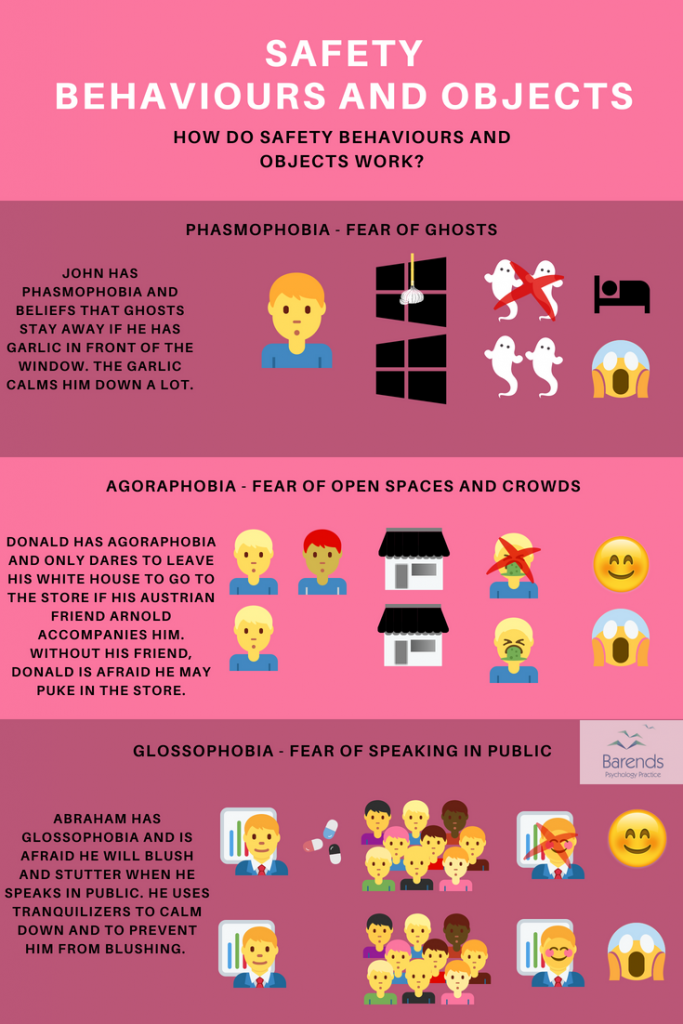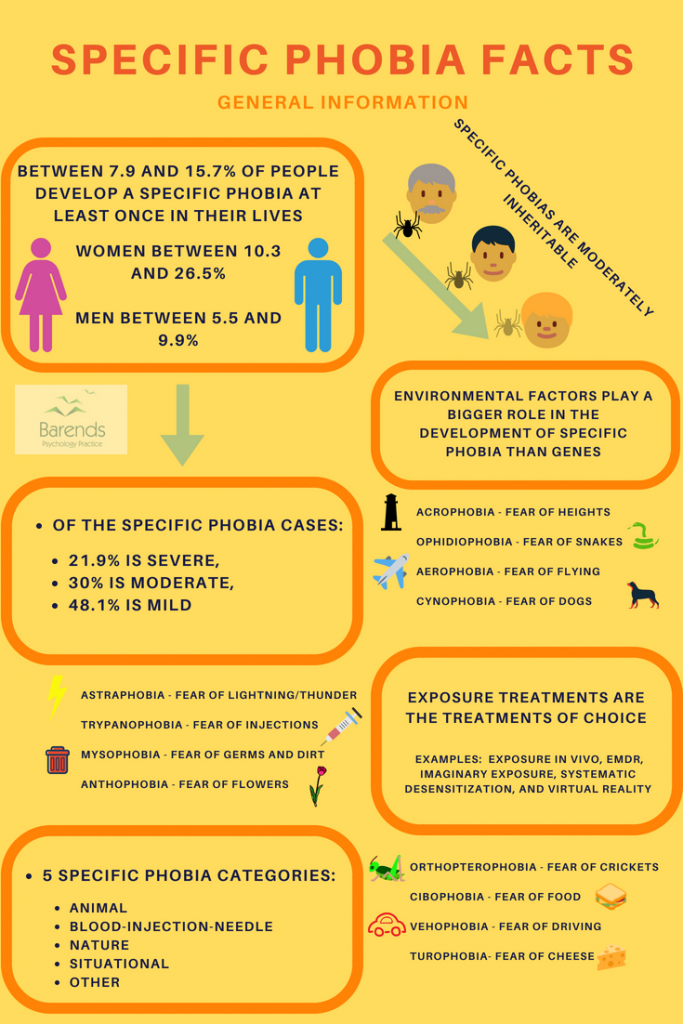Specific phobia test – online and anonymous
Phobias are one of the most common mental disorders. Everybody knows at least one person who has an excessive fear of open spaces and crowds (agoraphobia), of social situations (social phobia), or of spiders (arachnophobia). Not everyone who has an excessive fear of something has a phobia; the fear needs to be excessive and persistent, causing the person to experience panic, terror, and/or anxiety accompanied by some physical symptoms. Also, the person goes to great lengths to avoid facing the object, animal or situation. And on top of that, the person should not have a mental disorder with overlapping symptoms, such as obsessive compulsive disorder or generalized anxiety disorder. That is why we, at Barends Psychology Practice, developed a quick and anonymous online phobia test. This phobia test tells you when it is likely that you meet the criteria of a specific phobia, whether or not your symptoms may have reduced due to safety objects or behaviours [1], and if you may suffer from another mental disorder.
Please note: this phobia test is not a tool to diagnose people. Always reach out to a professional for a proper specific phobia diagnosis. If you doubt your results, do not hesitate to reach out. We are happy to answer your questions.
Scroll down to take the specific phobia test immediately.
Go to:
At Barends Psychology Practice, we offer (online) counseling for specific phobias. Contact us to schedule a first, free of charge, online session. (Depending on your health insurance, sometimes treatment can be reimbursed).
(Advertisement. For the specific phobia test, please scroll down.)
How safety behaviour and objects may reduce phobia symptoms

Safety behaviour or safety objects may reduce certain specific phobia symptoms [1] and, therefore, negatively influence the test results. Safety behaviours are coping behaviours that help you to reduce anxiety and fear when facing the feared object, animal or situation. An example of safety behaviour is: leaving the situation early, not approaching the feared animal, but also certain rituals or compulsions, such as checking if the cage is locked several times. A safety object is any object or human being that calms someone down or reduces their anxiety levels when facing the feared animal, situation or object. An example of a safety object or person: taking a friend to the store in case the person has Agoraphobia (fear of open places and crowds), using soap to wash hands excessively in case of Mysophobia (fear of germs and dirt), and a safety blanket for children to protect them against ghosts.
However, apart from the possible negative influence on the phobia test, safety behaviour also has a negative effect on treatment and enhances the experienced anxiety. Safety behaviour basically ‘teaches’ someone with a phobia that their fear can only reduce because of the safety behaviour or object [1].
(Advertisement. For the specific phobia test, please scroll down.)
Literature:
- [1] Milosevic, I., & Radomsky, A. S. (2013). Keep your eye on the target: Safety behavior reduces targeted threat beliefs following a behavioral experiment. Cognitive Therapy and Research, 37, 557-571.


